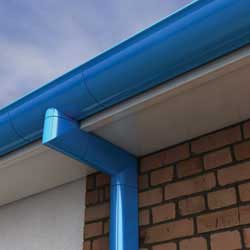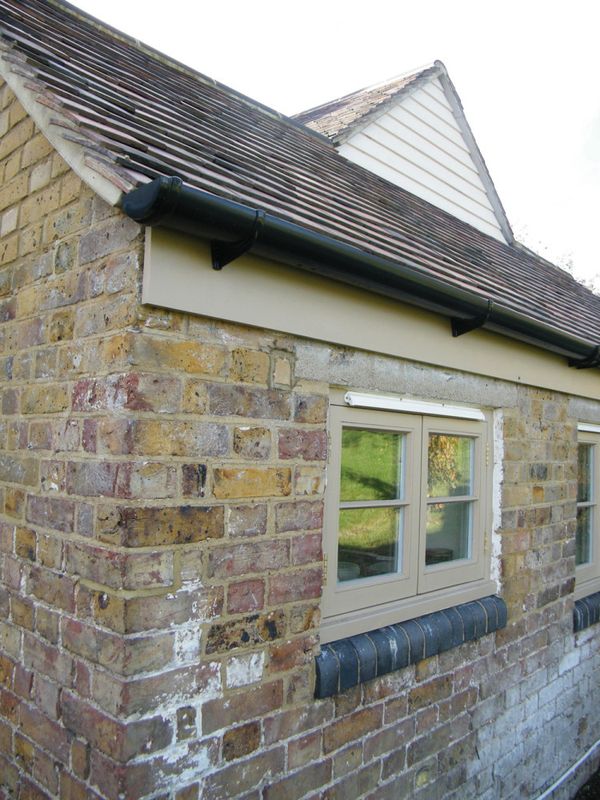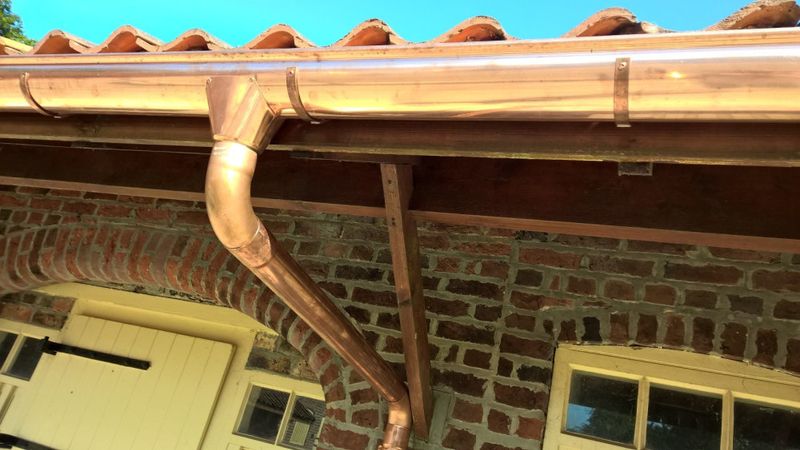Whether you’re in the process of building your new dream home or renovating your trusted old one, you’re going to need a high-performance fascia and guttering system to safely collect and redirect all that runoff rainwater from your roof and protect it from damage.
Even if you’ve already decided on a suitable material – plastic, steel, cast iron, aluminium, zinc and copper are all fantastic options – you’ll need the right guttering sizes for the UK as well.
You’re probably wondering:
What are the different sizes of guttering?
What size is standard guttering?
At Roofing Superstore, we’ve put together an essential guide to clear up any confusion and uncertainty about UK gutter sizes you might have.
Table of contents:
What size is standard guttering?

Many homeowners ask us about the standard gutter size in the UK – and with good reason!
The thing is:
There is no such thing as a single standard. In fact, guttering sizes in the UK can vary anywhere from mini guttering, which is 75mm in diameter, all the way to industrial guttering, which is 200mm in diameter.
That’s a lot of sizes!
That being said, there are certain common sizes depending on the gutter profile. We’ve prepared a handy table to give you a general idea of what they are.
| Gutter Profile | Typical Diameter | Other Common Diameters* |
|---|---|---|
| Half-round | 112mm | 100mm, 125mm, 150mm, 190mm |
| Deep | 115mm | 170mm |
| Box | 114mm | 112mm, 136mm |
| Ogee | 115mm | 106mm, 130mm |
*Not an exhaustive list of available choices
If you’re wondering about the length of guttering, it’s more or less the same situation. Most options on the market are 2m or 4m long, but you can easily find anything as short as 0.6m for most guttering types.
Keep in mind that, regardless of size, all house gutters sold in the UK must conform to British Standards BS EN 12056-3:2000 Gravity drainage systems inside buildings. Roof drainage, layout and calculation (AMD 17041).
How to measure gutter size in the UK

Now that you know what your options are, you’re ready to decide on the appropriate sizes for your home.
There are two basic scenarios. Let’s take a closer look at each one.
Replacing existing gutters
If you’re simply replacing your old guttering system which has served you well, all you have to do is measure the guttering dimensions of what’s already there.
Ideally, you’ll have a spare gutter lying around somewhere. If this is the case, simply take out your tape measure to estimate the diameter and length of the product, as well as the guttering width. You’ll also need to note how many of those you have up on your roof to figure out the total number of gutters as well as brackets and other fittings you’ll need to order.
Naturally, the number will differ depending on the size of your roof and whether you’re replacing all or part of your guttering system.
If you don’t have any spares, you’ll have to climb up a ladder to measure the relevant dimensions of the gutters currently in use.
Simple as that!
Choosing gutter sizes for a new build
If you’re looking to buy gutters for a newly built house, you’ll have to do a few calculations.
Here’s the deal:
To put it simply, the guttering sizes you’ll need in the UK depend on two primary factors – the Effective Roof Area (ERA) and the Flow Rate (FR) of the roof gutter.
To calculate your effective roof area, you’ll first have to measure the Length (L) and Width (W) of your roof, as well as its Height (H) from eaves to ridge, all in metres.

Then, use the following formula:
ERA (m2) = L x (W + H/2)
Here’s a quick example:
If your roof is 10m long, 8m wide and 2m high, your effective roof area would be:
10 x (8 + 2/2) = 90m2
One down – one to go!
Next:
A gutter’s flow rate tends to vary depending on its profile and size. For instance, a 115mm deep gutter will likely have a higher flow capacity than a 112mm half round one. You should be able to find the relevant data for each model in the manufacturer’s brochure.
Now:
To figure out the flow rate you require, you’ll need two variables. You’ve already got one of them – your effective roof area. The other one is the Rainfall Intensity (RI) in your area.
This is where it gets a bit more complicated, as rainfall intensity varies a lot across the UK. So, you can’t simply use the UK average. Instead, you’ll have to get accurate data for your local area from a weather authority like the Met Office.
Assuming you can do so, you can use the following formula:
FR (litres/second) = ERA x RI
After this, all that’s left is comparing the required flow rate with that of the products on offer and deciding whether to go with wide gutters, narrow guttering and so on.
What size gutters are best?

Choosing the right gutter sizes for the UK can be a bit tricky since there are lots of different options out there and quite a few factors for you to consider. So, there’s no one-fits-all, best solution when it comes to size.
The thing is:
If you go too small, your guttering system might overflow during sustained periods of heavy rain, causing all sorts of troubles ranging from minor roof leaks to serious structural damage.
So, why not simply go big, I hear you ask? Better safe than sorry, right?
Well, not quite – and here’s why:
First, you might have trouble fitting extra-large gutters on your roof.
Second, even if you succeed, they might look out of place and ruin your exterior design.
Third, guttering can be quite expensive, and large guttering will cost more.
The bottom line is:
When it comes to choosing guttering, you need to find the right balancing act between material, size and cost. And now that you know your way around UK guttering sizes, you should find this task a lot easier.






























